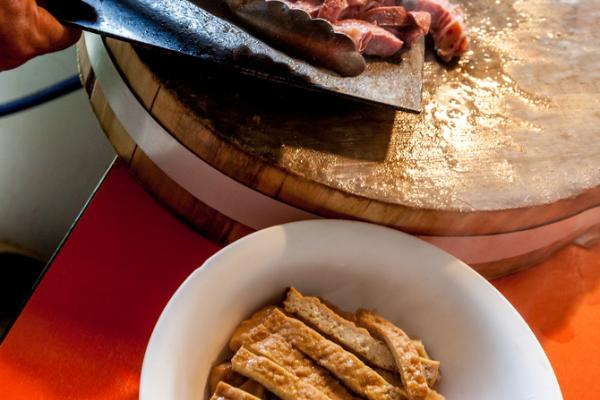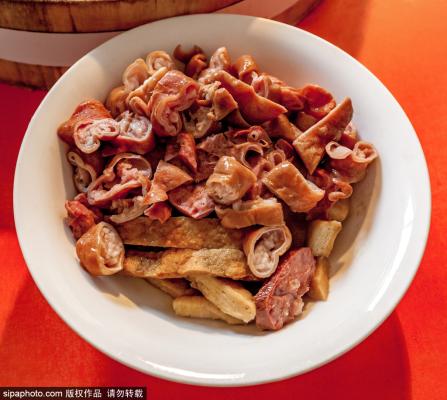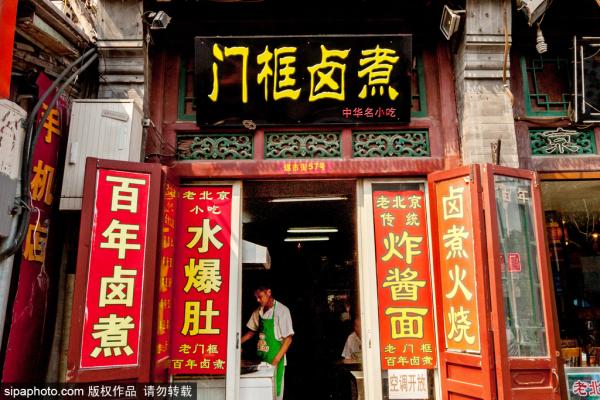Luzhu huoshao ( Qianmen Branch )

-
Type:
Beijing Cuisine -
Tel:
18301235815 -
Per Capita Consumption:
43 RMB 43 RMB -
Business hours:
9:00 - 21:30
Description
Luzhu huoshao
Luzhu huoshao(Chinese: 卤煮火烧; pinyin: lúzhǔ huǒshāo; lit.: 'pork stew with bread') is one of the most well-known traditional Beijing street foods. Long considered a luxury, the cuisine is especially prevalent in Beijing. The main ingredients are pork, pork lung, pork intestines, pork liver, tofu, and some may add Fermented bean curd or chives sauce, and it is served with bing bread.
The origins of luzhu huoshao can be traced back to the Qing dynasty as a palace food in Peking. Accord...
Luzhu huoshao
Luzhu huoshao(Chinese: 卤煮火烧; pinyin: lúzhǔ huǒshāo; lit.: 'pork stew with bread') is one of the most well-known traditional Beijing street foods. Long considered a luxury, the cuisine is especially prevalent in Beijing. The main ingredients are pork, pork lung, pork intestines, pork liver, tofu, and some may add Fermented bean curd or chives sauce, and it is served with bing bread.
The origins of luzhu huoshao can be traced back to the Qing dynasty as a palace food in Peking. According to legends, "su zao rou" (Chinese: 蘇造肉) was a dish invented by Zhang Dongguan as a tribute for Qianlong Emperor during one of Qianlong' inspection to Suzhou around 1970 and it was the origin of luzhu huoshao .[3] Unlike other cook Zhang Dongguan usually combines different types of herbs and spices in cooking, and his technique impressed Qianlong emperor, so Zhang eventually became the lead cook in the palace. As time goes by, the recipe of "su zao rou" spread to the out side of palace as well, and many people tried to imitate the cooking style and eat like an emperor. However the key ingredient, which is pork belly, was not very affordable for many people at that time. Therefore, pork lung, intestines and many other type of pork offal were used as a substitute for pork belly, in order to make the most people able to afford this dish. Hence, luzhu huoshao was formed over generations, and since then, it has become one of the most well-known Beijing street food, and still in fashion nowadays.
Much like Stinky tofu, luzhu huoshao also has a very strong odor, and it could be a challenge for people who haven't ever tried before. However, it is still one of the most famous Beijing traditional street foods, and a "must try" for local Beijing people. Cui Daiyuan (崔岱远) is a contemporary writer from Beijing, and in his book "The flavor of Beijing" (京味儿), Cui has described luzhu huoshao as "a food that allows the poor people to experience the superior life" (穷人解馋的玩意) in the chapter for luzhu huoshao. In his opinion, Beijing's street foods such as luzhu huoshao provides a chance for the poor people to experience how the foods in palace taste like. Luzhu huoshao was originated from palace food, hence the ingredients were costly for many families in the olden days. Nevertheless, many people also wanted to know how does the food for the emperor tastes like, so they replaced the expensive ingredients such as pork belly with cheap ingredients such as pork lung and intestines, and created their own version of "palace food". Nowadays, eating luzhu huoshao is more like a custom that Beijing people feels attached with. Not everyone would accept the strong odor, but people who likes it certainly feels attached to it and the traditional Beijing culture.[5] Therefore, you can still find many restaurants that sells luzhu huoshao in Beijing, or even overseas.
There are certain characteristics that are expected from a well made luzhu huoshao, which also make it a unique Beijing street food. Similar to baodu, the meat in a well made luzhu huoshao is supposed to be reasonably chewy, neither too tough nor falling apart.[7] It might have an unappetizing appearance, but the taste should be rather complex and salty, with a sense of herb and soy sauce. The huo shao (Bing (bread)) is soaked in the soup to flavor it, and it should be juicy rather than sticky. Pork offal would have a strong odor due to its property, but it should still be fresh made, without any tacky taste or smell.
Gallery
Explore
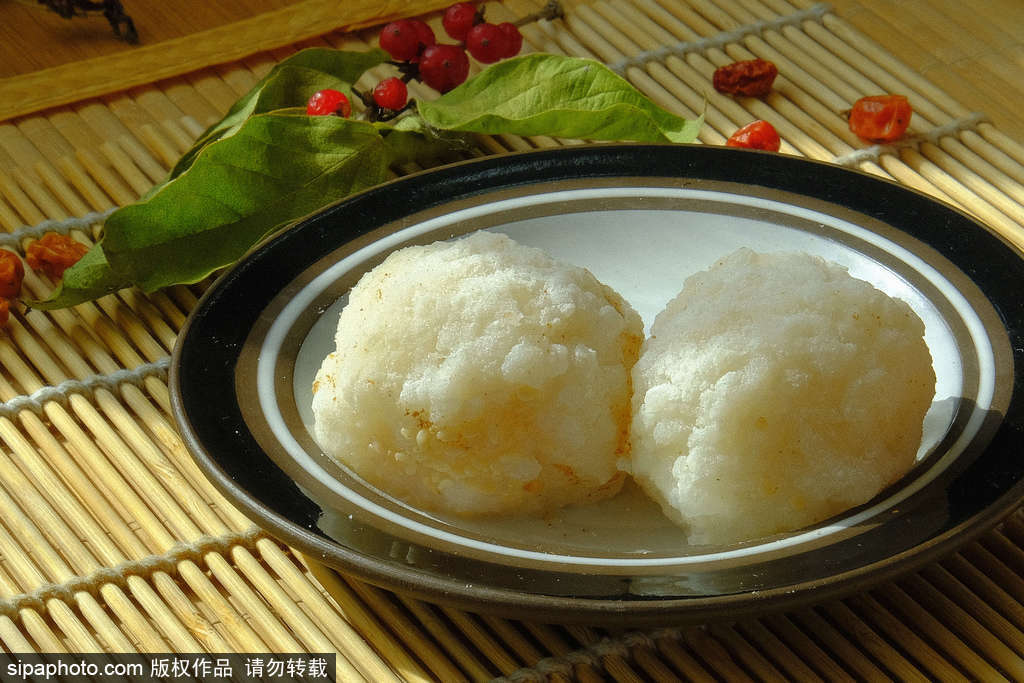
Steamed Rice Cakes with Sweet Stuffing (Ai Wo Wo)
Ai Wo Wo is a traditional Beijing snack with a very long history and receives a great popularity among the public.
Seasoned Millet Mush (Mian Cha)
The literally meaning of Mian Cha refers to flour tea in Chinese, however, this snack has nothing to do with tea.
Fried Rings (Jiao Quan)
Looking like an onion ring, fried ring is a traditional Beijing snack. It is a circle of fried dough with crispy taste.
Do You Know
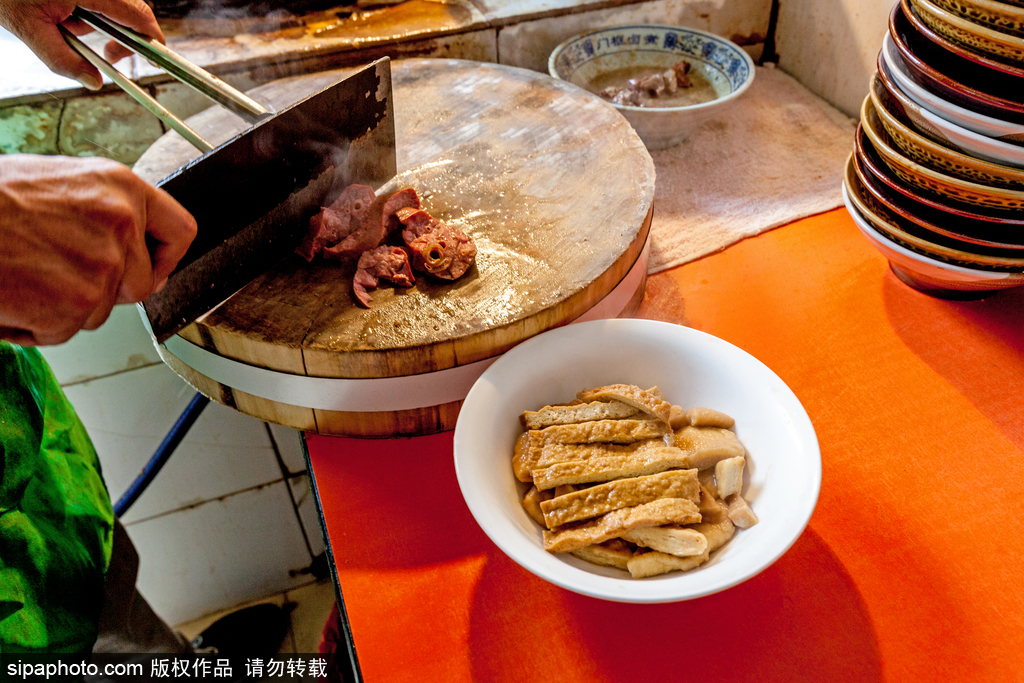
Names of restaurants that are famous of serving Luzhu huoshao
Menkuang Luzhu、Beixinqiao Luzhu Laodian、Xiao Chang Chen
